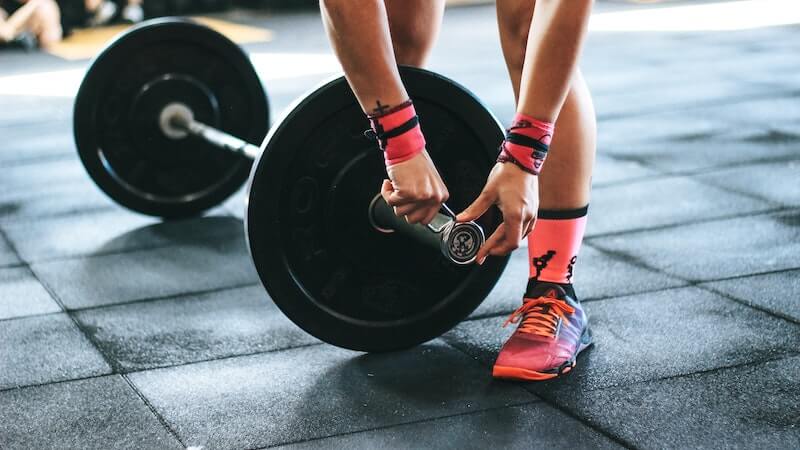Check Your Form: The Squat and Deadlift
Episode #7 of the course Hack your workout: A self-paced system for core muscle and posture strength by John Robin
Welcome to Day 7 of our course!
Now that we’ve covered all three aspects of the workout, we’re going to return to the core strength exercises.
There’s much that could be said about cardio and stretching, but they are secondary to strength training.
Strength training makes the muscles that you use for your daily life stronger. It will assist your ability to stand upright with proper posture, to sit properly when you’re in a chair, and to hold your head and shoulders in a healthy alignment when you’re working at a desk or computer.
But of all the aspects of this workout, the core strength training exercises are the most likely to result in injury if done incorrectly.
So, for the next two lessons, we will cover each in more depth, starting today, with a look at the two most important ones.
Squats: A Deeper Study
Think of the squat as the exercise that lets you sit properly for longer periods of time. The stronger your squat, the better you can keep the muscles of proper sitting posture firing. The founder stretch helps you stretch the muscles strengthened in the squat so they are loose and limber in your daily life.
As you are doing squats, it’s critical that you have proper form. Here are pointers to build on Lesson 4.
Entering the rack to squat:
• Set the bar up on the J-hooks in the power rack.
• Grip the bar so your forearms form a right angle with it.
• Position yourself under the barbell by ducking under it.
• The barbell should be resting about ⅓ down your shoulder blades.
• Flex your shoulder blades together to point your elbows slightly backward.
• Make sure your feet are shoulder distance apart.
• Your feet should point out 45°.
Unracking:
• Stand up once you have the bar and your feet correctly positioned.
• Take one small step back with each foot, keeping your feet shoulder-distance apart and still angled out 45°.
Dropping to a squat:
• Look straight ahead, not at your feet.
• Take a deep breath and hold it.
• Sit back into a squat.
• Imagine a vertical line extending from the barbell to the middle of your feet the whole way down.
• Stop when your thighs are parallel to the floor.
• Imagine you are sitting in a chair seat that’s flush with your knees.
Rising out of the squat:
• Do not pause once you reach a sitting position.
• Flex your thighs and butt muscles immediately to lift your hips.
• Do not let your lower back round out, as this can lead to injury.
• Stop when your legs are straight.
• Do not overextend by flexing the knee joints.
Run through this checklist and practice again and again. It’s better to squat at a light weight for many reps where you can practice and perfect form, especially when getting started.
Deadlifts: A Deeper Study
Think of the deadlift as the exercise that lets you get around on your feet with more ease. The stronger your deadlift, the better you can stride, carry bags, or move furniture. The lunge stretch helps you stretch the muscles strengthened in the deadlift so you can get around more nimbly.
Just like with squats, deadlift form is critical. Here are deadlift pointers.
Setting up the deadlift:
• Set up the bar with plates just outside the power rack, on top of the mat.
• Stand with your feet halfway under the bar.
• Feet are hip-distance apart.
• Feet are angled out 10°.
• Bend down to grip the bar.
• Grip with hands hip-distance apart, right above your feet.
Lifting up:
• Bend your knees and hips into a half-squat.
• Your thighs are about 45° and meet your torso at a right angle.
• Take a deep breath and hold it.
• Push down with your shoulder blades and flex your abs.
• This makes your core firm and your spine neutral.
• Flex with the upper legs to lift the bar.
• Keep the core firm and hold your breath.
• Use your butt muscles to assist your upper legs as you lift the bar all the way to your hips.
Lowering the bar safely:
• Stop when your legs are straight.
• Don’t flex your knees, as this overextends your knee joint.
• Don’t bend your hips forward, as this hyperextends your lower spine.
• Blow out the breath you’ve been holding, and push your hips back.
• The backward push will help slide the bar down your thigh.
• Once the bar is below your knees, flex the knees fully to return to the half-squat you started in.
These safety pointers are just as important for the deadlift as the squat.
Many people injure themselves from squats and deadlifts because they ignore proper form. Practice this checklist again and again.
Tomorrow, we’ll move to the bench press, overhead press, and barbell row.
Recommended videos
In-depth workshop on squats with Ben Pollock
In-depth workshop on deadlifts with Ben Pollock
Share with friends

